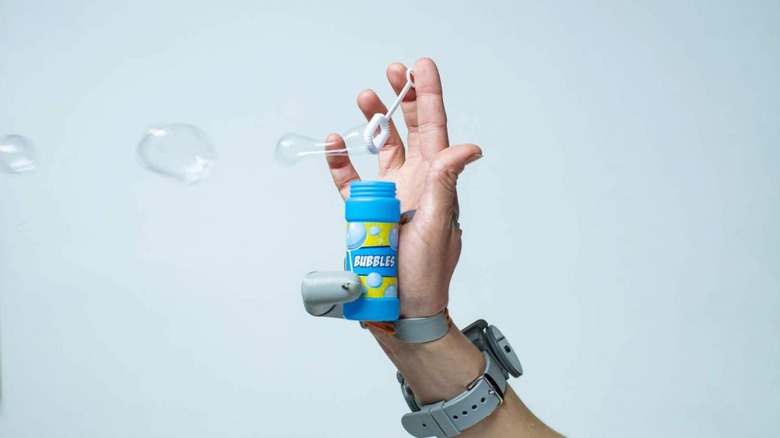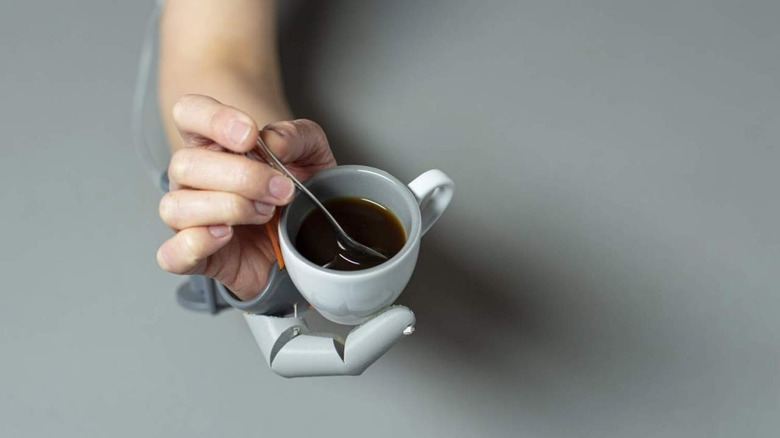Strange Robotic Thumb Can Impact How The Hand Is Represented In The Brain
UCL researchers have created a strange robotic "third thumb" that attaches to the hand and adds a large extra digit on the opposite side of the hand from the thumb. Researchers found that using the robotic thumb can impact how the hand is represented in the brain. For the research, scientists trained people to use an extra robotic thumb and found they could effectively carry out dexterous tasks such as building a tower of blocks using a single hand with two thumbs.Researchers said that participants trained to use the extra thumb increasingly felt like it was part of their body. Initially, the Third Thumb was part of a project seeking to reframe the way people view prosthetics from replacing a lost function to becoming an extension of the human body. UCL Professor Tamar Makin says body augmentation is a growing field aimed at extending the physical abilities of humans.

However, a significant challenge in body augmentation is that we don't clearly understand how the brain would adapt to it. By studying people who use the Third Thumb, researchers sought to answer questions about whether the human brain could support an extra body part and how technology might impact the brain. The Third Thumb is 3D printed and easily customized.
The wearer can control it with pressure sensors attached to their feet on the undersides of the big toes. The buttons wirelessly connected to the thumb, and the toe sensors control different thumb movements by immediately responding to subtle changes of pressure from the wearer. The study involved 20 participants trained using the thumb over five days, and they were encouraged to take it home each day after training to use it in daily life scenarios.

The participants wore the artificial thumb for between two and six hours per day. They were compared to an additional group of 10 control participants that wore a static version of the thumb while completing the same training. Participants trained to use the thumb were focused on increasing the cooperation between the hand and the thumb, performing tasks like picking up multiple balls or wine glasses with one hand.
The brains of the participants were scanned before and after training using fMRI while they were moving their fingers individually without the artificial thumb. The scientists found subtle but significant changes to how the hand that had been augmented with the third thumb was represented in the brain's sensorimotor cortex. A week after the study ended, the brains were scanned again, and researchers found the changes had subsided.
